Supreme Court Opens New Term A Justice Short
For the second time in two years, the Supreme Court starts a new term down one Justice. That isn't as big a problem as it might seem.
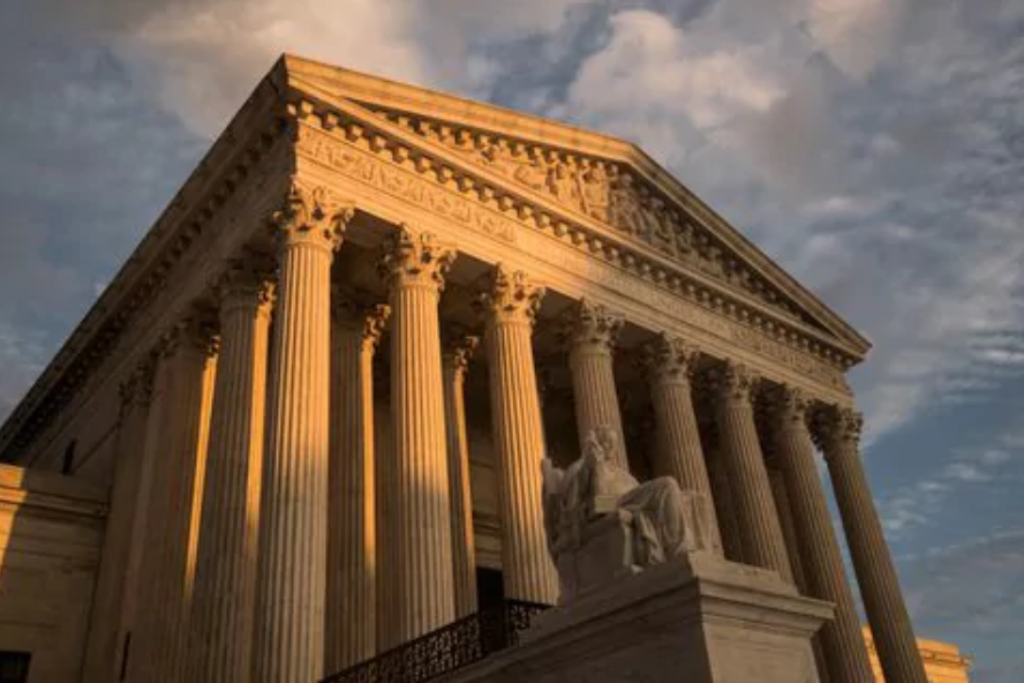
For the second time in two years, the Supreme Court is beginning its new term one Justice short due to the ongoing controversy over the nomination of Judge Brett Kavanaugh, but the fact that the Court has a relatively quiet docket is likely to avoid the kind of ideological logjam many had feared:
In the shadow of a titanic confirmation fight, the Supreme Court will return to the bench on Monday with a docket that offers an opportunity to lower the temperature.
Blockbuster cases on fiery social issues are missing from the calendar, at least for now. Instead, the justices will face lower-profile but still consequential legal questions that may allow them to find ways to bridge the usual ideological divides.
The justices have made similar attempts at unity in the past in reaction to fraught transitions on the court, like the one after the death of Justice Antonin Scalia in 2016. This time, the task has grown only more urgent as the bitterly partisan confirmation process for Judge Brett M. Kavanaugh, President Trump’s Supreme Court nominee, has been delayed so the F.B.I. can investigate sexual misconduct allegations.
“No matter how the current nomination of Judge Kavanaugh plays out,” said Jeffrey L. Fisher, a law professor at Stanford, “I suspect the court will be exceptionally eager to demonstrate how law is different from politics — that is, that it’s not a political body.”
“I expect many justices may make an extra effort to find common ground with unlikely allies,” he said. “The court’s legitimacy as an apolitical institution is going to be on the line to a greater degree, perhaps, than at any time in our lifetimes.”
But while the court’s low-key docket may help serve as a balm, the cases it will hear could ripple widely, posing threats to potential prosecutions of Mr. Trump’s associates and perhaps eventually to abortion rights. And big cases are in the pipeline, including ones on gerrymandering, gay rights and immigration.
The latest intrusion of politics into the Supreme Court is similar to one two years ago, when it started a new term with an empty seat after Senate Republicans refused to consider President Barack Obama’s nominee, Judge Merrick B. Garland, to replace Justice Scalia. The term that followed set a modern record for consensus.
That did not last long. Justice Neil M. Gorsuch, Mr. Trump’s first Supreme Court appointee, joined the court last year, and his first full term was marked by a series of sharply divided conservative victories on major issues like the president’s authority to restrict travel from abroad and whether government workers may be required to pay for the work of public unions.
Now, as the court faces another transition, it has again put together a quiet docket, said Kannon Shanmugam, a lawyer with Williams & Connolly. “This term is loaded with meat-and-potatoes cases, not blockbusters,” he said. “This will be a year for the case books, not the history books. At a volatile time, the court has filled its docket so far with nonvolatile cases.”
Still, the new term will provide important clues about where the court is headed. For instance, the justices have agreed to hear an unusually large number of appeals asking them to overturn precedents. The outcome of those cases could provide hints about the future of Roe v. Wade, the 1973 decision that established a constitutional right to abortion.
One precedent at risk concerns the Constitution’s double jeopardy clause, which forbids subsequent prosecutions for the same crimes. The Supreme Court has made one exception, saying that the federal government and the states are independent sovereigns, meaning that the same conduct can be prosecuted separately in state and federal courts.
In 2016, Justice Ruth Bader Ginsburg, joined by Justice Clarence Thomas, called for a fresh look at whether the exception makes sense. “The matter warrants attention in a future case in which a defendant faces successive prosecutions by parts of the whole U.S.A.,” she wrote.
(…)
The other precedents under attack concern whether lawsuits may be brought against state governments in the courts of other states, and procedures for suing in federal court over government’s use of eminent domain to take private property.
The Supreme Court will also consider whether the Constitution has anything to say about state civil forfeiture laws in Timbs v. Indiana, No. 17-1091. The case started when officials in Indiana, which has a law allowing the state to take property used to commit crimes, seized a $42,000 Land Rover from a former drug addict and small-time drug dealer named Tyson Timbs.
Mr. Timbs said the action violated the Eighth Amendment’s prohibition of excessive fines, but the Indiana Supreme Court ruled that the excessive fines clause does not apply to the states. The United States Supreme Court has said most parts of the Bill of Rights do apply to the states, but it has never squarely decided whether the excessive fines clause does.
For the most part, the higher profile cases noted above and in the rest of Adam Liptak’s article in The New York Times have yet to be scheduled for oral argument, and will likely be held for scheduling at least for a short while to await the status of the Kavanaugh nomination. That being said, if there is a delay of longer than a week or two then it’s likely that at least some of these cases will be set down for argument regardless of whether or not there is a ninth Justice seated. For the most part, though, the current docket does not appear to have quite as many cases likely to divide along ideological grounds as we saw in the previous term, at least not yet. The Double Jeopardy case, for example, addresses an issue that has received criticism from both the left and the right side of the bench in recent years and which is likely to draw a majority that includes Justices from both sides of the aisle. The same goes for the issue of civil asset forfeiture, although in that case, the long-standing Supreme Court precedents in favor of the practice are likely to mean that opponents of the practice are going to be disappointed at the outcome in that case.
In any case, the early weeks of the Court’s schedule mostly consist of oral argument in cases that deal with rather technical areas of the law for which there is no easy left-right dividing line. These are the types of cases that either end up being unanimous, or nearly so, or produce majorities that consist of odd mixtures of left and right that inevitably come to the surprise of those who don’t watch the Court on a regular basis. During both the term during which Justice Scalia’s seat was vacant for most of the time and in the first term that Justice Gorsuch was on the Court we saw several opinions where conservative Justices such as Clarence Thomas and Samuel Alito were on the same side of an issue as the Court’s liberals, and several occasions where liberal Justices such as Elena Kagan and Sonia Sotomayor were on the same side of an issue as the Court’s conservatives. This is due to the fact that the conservative vs. liberal divide does not translate as easily to the law as either conservatives or liberals seem to think, and because many of the cases that the Justices hear don’t fall neatly into political or philosophical categories. Finally, there’s the fact that there is, generally speaking, a tradition among lawyers and Judges of maintaining collegiality even in the face of disagreement that simply doesn’t exist among politicians and most assuredly doesn’t exist among hardline ideologues, especially the ones you run into on social media. What all this means is that, just as it did from February 2016 to April 2017, the Court will survive the fact that they are one Justice short even as Americans tear their political culture apart fighting over who might end up filling that ninth seat.

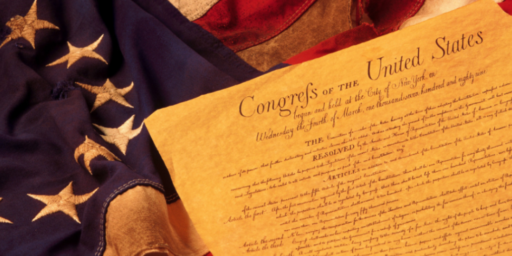
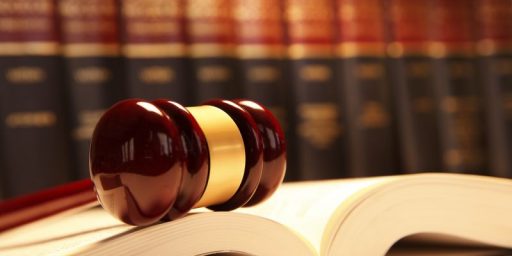
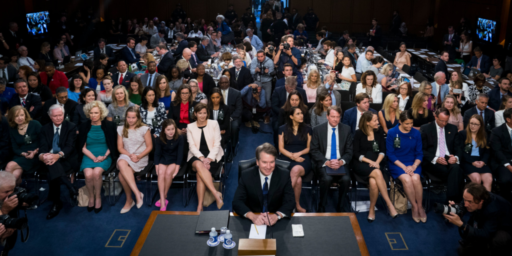
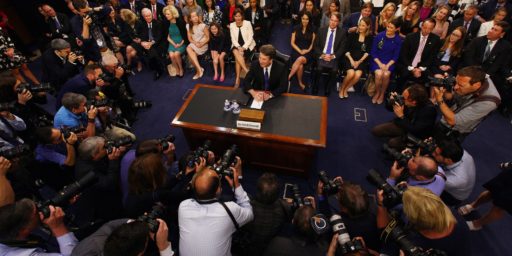
Predictions for the very near future:
1) Conservatives will complain bitterly that the court is short one justice, especially if a case winds up in a 4-4 tie, regardless of the vote split.
2) El Cheeto will Tweet, or yell, that “never has the court been short one justice, damn Democrats, biggest win ever!!1!, worst deal ever, I heart a murderous dictator, etc!!”
In other words, Kavanaugh wouldn’t be a good fit for SCOTUS…
“because many of the cases that the Justices hear don’t fall neatly into political or philosophical categories.”
Completely agree. However, when the case is ideological, the votes almost always end up based upon ideology.
Steve